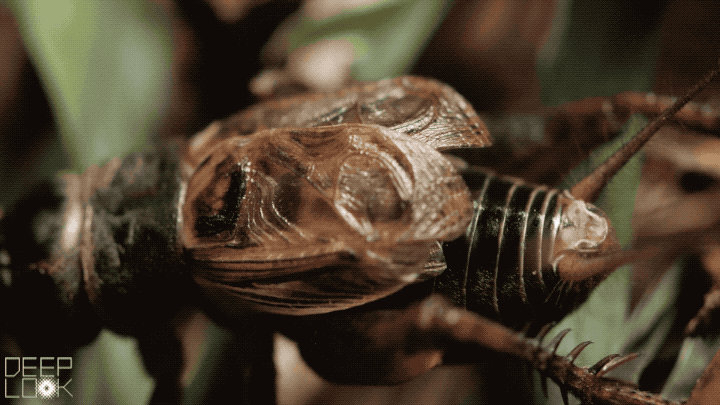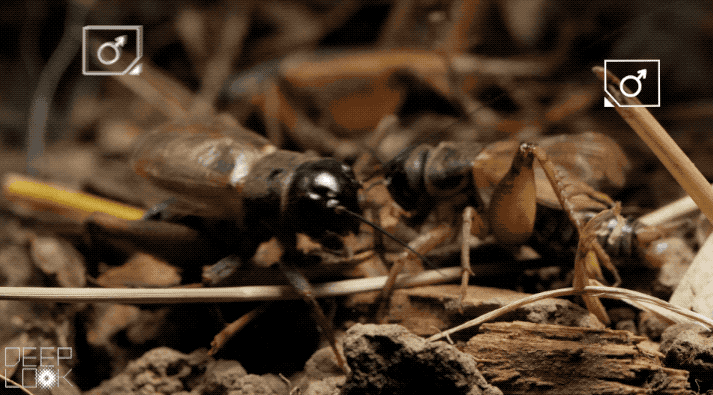Ask most people about crickets and you’ll probably hear that they’re all pretty much the same: just little insects that jump and chirp.
But there are actually dozens of different species of field crickets in the U.S. And because they look so similar, the most common way scientists tell them apart is not by the way they look, as with most animals, but instead, with a more subtle clue — by the sounds they make.
“When I hear an evening chorus, all I hear are the different species,” said David Weissman, a research associate in entomology at the California Academy of Sciences in San Francisco.
Weissman has spent the last 45 years working to identify all the species of field crickets west of the Mississippi River. In December, he published his findings in the journal Zootaxa, identifying 35 species of field crickets in the western states, including 17 new species. California alone hosts 12 species. But many closely resemble the others. So even for one of the nation’s top experts, telling them apart isn’t a simple task.
“It turns out song is a good way to differentiate,” Weissman said.
Weissman spends countless evenings making recordings of cricket songs around the Western states. He analyzes their chirps like a studio engineer closely mixing a hit soundtrack.
“I listen for the songs in an area, decide how many different songs that I can distinguish, and then collect males that makes those songs,” he said. “Then once I know which songs a male sings with, and therefore which species he is, I can go back and find physical characters that will usually separate that species from the other species in the immediate area.”
The trend began in the 1950s when researchers with early portable tape recorders learned there were far more cricket species than earlier scientists had realized.
Weissman isn’t the only one who needs to tell the different species apart. Female crickets need to be able to tell the males of their species apart from the males of other species. That’s because the characteristic, repetitive cricket chirp is really a mating call made by male crickets to attract females.
“Most people believe they produce the songs with their legs, like grasshoppers do, but that’s a misconception,” said Fernando Montealegre-Z, a professor of sensory biology at the University of Lincoln in the United Kingdom. He’s written numerous articles about how crickets and their relatives, like grasshoppers and katydids, make sound.

Crickets have two sets of wings — delicate hindwings and tough leathery forewings called tegmen that cover the hindwings when folded at rest. The males’ forewings have special structures for producing sounds that females lack.
On the underside of each of the male cricket’s forewings is a protruding vein that runs from side to side. It’s covered in a row of about 85 to 1,000 microscopic teeth, like the edge of a zipper. The structure, which researchers call a file, is made of chitin, a rigid polymer that makes the exoskeleton of insects.

When it’s time to sing, the male cricket raises both of its wings, with one, typically the right, slightly above the other. It rubs the sharp edge of the lower wing, called a scraper, along the file of the upper wing. The vibrations caused by running the scraper along the file are the source of the cricket’s chirp.
This way of making sound is called stridulation. “It’s like running your thumb down the teeth on a comb,” Montealegre-Z said.

Crickets are able to scissor their wings together like this at remarkable speeds. Each wingstroke cycle produces a single pulse of sound.
In fact, what we hear as a single quick chirp is typically made up of a numerous pulses created by individual wingstrokes. They happen so quickly that they blend together. As crickets age and they wear down their files, they make a raspier sound than younger crickets do.
Generally speaking, crickets generate a highly pure tone at about 5 kilohertz, a frequency higher than the highest key on a piano.
“They’re like well-made musical instruments,” Montealegre-Z said. “It’s their ability to create these pure tones. It’s what drew me to study crickets and their relatives.”
But crickets don’t chirp only to advertise themselves to mates. If an adult male cricket runs into another adult male, it uses a special rivalry call to try to encourage its competitor to back off. It sounds similar to the mating call but is less rhythmic and more aggressive sounding.

If a male cricket does manage to draw the female in close enough to make contact, he will then use a third type of call to woo her. This courtship call is much higher pitched and quieter, like a whisper.
It’s important that female crickets be able to identify males of their same species in order to avoid wasting their time pursuing the wrong male and because when they search for a mate, they are at risk of being eaten by a myriad of predators, including birds and reptiles.
Misidentifying cricket songs has also proved perilous for humans.
In late 2016, workers at the U.S. embassy in Havana, Cuba, reported hearing an alarming sound. The loud, constant and piercing sound and reports of various ailments, including ear pain, led some to believe that the embassy was under some type of sonic attack. Investigations began to find the source of the sound and the story made its way into the national news headlines.
That’s where Alexander Stubbs came in. As a graduate student in the integrative biology department at UC Berkeley, Stubbs had spent time studying how animals like frogs and crickets communicate in the Caribbean and Central America.
“It’s a truly piercing trill,” Stubbs said. “It really does sound strange.”
Stubbs compared the sound from the embassy that he heard in a news broadcast to songs from different species in an academic sound library of different singing animals. He used software to analyze the sound from the embassy and collaborated with Montealegre-Z to confirm his suspicions.
The sound heard in the embassy matched the mating call of the Indies short-tailed cricket.
“It’s unbelievably loud, especially in an enclosed space,” Stubbs said. But he wasn’t surprised that others didn’t recognize the song since this species of cricket hadn’t been identified in Cuba before. You can find the details of his findings here.
Most people might take the sound of crickets for granted. But listening closely to them helps people become more aware of nature, scientists say.
“Crickets are an important part of what we hear at night,” Weissman said. “In most areas of California, you might hear a few owls or coyotes. But in the summertime, crickets will be the major singing animals at night.”

